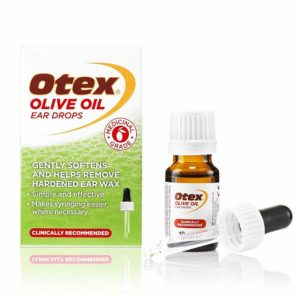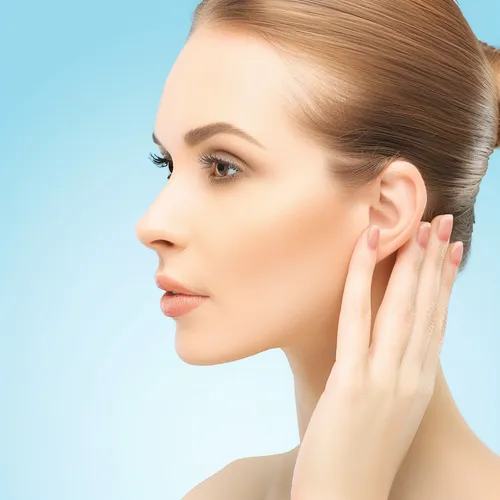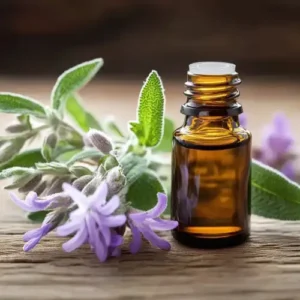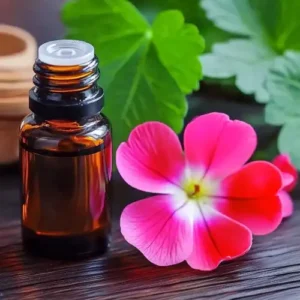What is Ear Wax?
Earwax is a natural waxy material produced in the ear by special glands. It helps to keep ears clean and healthy; it prevents the skin that lines the ear canal from drying out and cracking, and it keeps ears safe by trapping dirt and keeping out water to prevent infections.
Ear canals generally clean themselves as people talk, chew, and move their jaws. This can cause earwax and skin cells to move from eardrums to the ear opening where it dries and falls out of the ears. Earwax generally doesn’t cause any problems, but if earwax builds up too much it can cause blockages that can be painful and possibly cause hearing issues.
There are lots of products on sale for cleaning ears and removing wax, but do these products really work? What is the best way to clean out ears?
Important: Some people may experience temporary tinnitus (ringing in the ears) after ear wax removal. Learn more about what to expect and when to seek help.
Cotton Buds
Problems can arise when people try to clean out earwax using their fingers or cotton buds. Cotton buds are the worst for cleaning ears.
Even though people use cotton buds to keep their ears clean, manufacturers of ear buds advise against using them with the external auditory canal. Take a look at the packet the cotton buds came in before you grab them. You’ll likely find that they come with a warning that cotton buds shouldn’t be put into your ear canal.
When you use cotton buds, you actually push the earwax deeper into the ear. It can get stuck in parts of the ear that don’t get cleaned and are unable to clean themselves. The trapped earwax can contain bacteria from the outer ear and cause possible infections. Furthermore, getting rid of wax with cotton buds can irritate the skin of the ear, which encourages people to poke around the ear even more. This creates a vicious cycle where problems only get worse. There are also some cases where the bud is pushed too far into the ear, running the risk of perforating the eardrum. This causes sudden pain, bleeding, and may cause temporary hearing loss.
Ear Drops
Lots of people turn to ear drops for ear wax removal. Ear drops can loosen and soften up the wax so that it comes out of ears naturally. There are several different kinds of ear drops available on the market. Otex Express Ear Drops are a popular choice with many. These drops are easy to use and employ an advanced, dual-action formula which softens hardened ear wax and gently liberates oxygen to help disperse it.
While ear drops can be effective for removing built-up earwax, they aren’t a cure-all solution. Sometimes excessive wax accumulation is a symptom of an underlying condition like dry ear canal skin, excessive hair in the ear canal, or a structural abnormality. If you find yourself needing to use ear drops frequently, it’s a good idea to see your doctor. They can evaluate what’s causing the recurring buildup and recommend a better long-term solution.
You should also exercise caution when using ear drops if you have certain ear conditions like a perforated eardrum, ear tube, or a prior ear surgery. The liquid could potentially cause complications or infections in those cases. Always read product instructions carefully and discontinue use if you experience severe pain, dizziness, ringing, or drainage from the ear.
The active ingredients for many brands of commercial ear drops tend to be sodium bicarbonate, hydrogen peroxide, or sodium chloride. Ear drops can be effective but they may be irritating for people who have sensitive skin. If you want to try this method, we recommend Otex Sodium Bicarbonate Ear Drops for Hardened Ear Wax.
Instead of using ear drops, almond oil drops and olive oil drops may be just as good as expensive commercial products. For convenience though, you might want to consider using Otex Olive Oil Ear Drops for Hardened Ear Wax

If you are interested in using almond oil and olive oil to loosen ear wax then warm the oil up to body temperature and lie down to one side. Apply some drops using a dropper into your ear and hold the position for between 5 and 10 minutes.
Olive oil isn’t likely to irritate your ears, but it can take some time to affect ear wax and soften it up. You may have to repeat the process several times a day for up to five days to get rid of a nasty wax build-up.
Another home remedy some people try is using a few drops of warm mineral oil, glycerin, or baby oil in the ear. The idea is that these oils can soften and help drain out wax over time. However, experts are divided on the safety and efficacy of this approach. Oil can sometimes cause more blockage rather than less if not used properly. It could potentially lead to skin irritation, dizziness, or even hearing loss if the eardrum ruptures. For safety’s sake, it’s best to stick with over-the-counter ear drops specifically formulated for wax removal unless your doctor advises otherwise.
Ear Irrigation
If you’ve got an ongoing problem with earwax then your GP may recommend that you have an ear irrigation, also known as syringing. The process uses a tool to push pressurized water into your ear canal to dislodge clogged wax.
However, while an ear irrigation can remove earwax, it can be painful at times and could damage the ear drum.
It is crucial to remember that ear irrigation should only be carried out by a qualified healthcare provider, such a nurse or doctor, who is skilled in the procedure. Prior to the surgery, they will carefully inspect your ear to make sure there are no underlying diseases or contraindications that would make it risky.
A syringe-like tool will be used by the medical practitioner to inject a steady stream of warm water into the ear canal during the ear irrigation treatment. The earwax buildup is gradually released by the water, allowing it to float out of the ear. The wax and water that are released during this operation are often collected in a basin or other receptacle.
While the treatment itself could make you feel a little uncomfortable or pressure in your ear, it shouldn’t hurt too bad. It is vital to let the medical practitioner doing the operation know if you suffer any pain or discomfort during the procedure. To ensure your comfort and safety, they might modify the pressure or method as necessary.
The procedure of ear irrigation carries some possible dangers. First off, overly hot or cold water might make you feel lightheaded or dizzy. The water should be at body temperature or a little warmer to avoid this. The operation may also result in brief alterations in hearing or tinnitus (ear ringing), but these often go away quickly.
The potential for eardrum or ear canal harm is another risk. The eardrum may be lacerated or perforated if the procedure is carried out improperly or with excessive force. Because they can ensure the proper method and pressure are used, qualified professionals are absolutely necessary to do ear irrigation.
There is frequently some leftover water in the ear canal after the procedure. Typically, the medical expert will gently dry the outer ear using a soft cloth or tissue. To help evaporate any leftover moisture, you could also be told to use a drying agent or keep your head tilted to the side.
If the earwax accumulation is very difficult to remove or if there are underlying problems, such as narrow ear canals or excessive earwax production, ear irrigation may occasionally need to be repeated. Your healthcare provider will give advice on how to avoid earwax development in the future and can suggest substitute procedures, such ear drops, for maintenance.
One crucial point – you should never attempt to irrigate your own ears at home using a bulb syringe or turkey baster filled with water. This folk remedy is extremely risky and has led to countless ruptured eardrums and other inner ear injuries when not done properly. Flushing the ear requires precise angles, pressure control, and visualization of the ear canal that’s best left to trained professionals with the right tools and techniques. Attempting it yourself carries a high risk of vertigo, ear infection, hearing damage, and other serious complications. Let the experts handle ear irrigation.
Microsuction
Microsuction is a procedure that some clinics offer for earwax removal. The procedure involves a clinician using a microscope to look into the ear canal, then using a tiny suction device to get rid of the wax they find. Microsuction is a safe and effective technique for removing persistent earwax blockages. However, most people have perfectly healthy and natural levels of earwax. Leave your ears alone unless you have a serious problem!
The practitioner utilises a binocular microscope during the surgery to magnify the ear canal and provide a clear image of the obstruction. This enables them to use a low-pressure suction equipment to precisely target and remove the extra wax. The suction tool is delicate and made specifically for the sensitive ear canal, ensuring that the patient experiences the least amount of discomfort possible.
One benefit of microsuction is that no liquids or items are inserted into the ear, lowering the possibility of harm to the eardrum or ear canal. Additionally, it enables instant visualisation, allowing the doctor to watch the procedure in real-time and guarantee complete removal of the wax.
Microsuction can frequently be done in a clinic environment and is a brief treatment. Despite some patients experiencing a tickle or small pressure during the suctioning procedure, it is generally painless. People may enjoy instant alleviation from problems like hearing loss or earaches following the surgery.
It’s vital to remember that not everyone is a good candidate for microsuction. Candidates for this operation may not include people with a history of ear surgery, a ruptured eardrum, or certain ear disorders. Alternative wax removal techniques, like ear irrigation, may be suggested in such circumstances.
Avoid introducing anything, such as cotton swabs or other small items, into the ear canal to avoid excessive earwax buildup or the requirement for frequent microsuction. These might harm the ear or block it by pushing the wax further within. Instead, simply use a washcloth to clean the ear’s exterior as part of your usual hygiene practise.
To sum up, microsuction offers a secure and practical remedy for people who have troublesome earwax blockages.
You can help prevent recurring earwax buildup and the need for professional removal procedures in several simple ways. First, use a washcloth to gently wipe away any visible, outer ear wax during your normal shower routine. But don’t insert anything into the actual ear canal – that can pack wax in tighter. You can also try ear-drying drops containing isopropyl alcohol to aid the natural wax migration from the ear canal outward. Finally, consider over-the-counter ear wax softening drops with ingredients like carbamide peroxide to keep wax soft and movable if you’re prone to blockages. With some basic maintenance, many bothersome earwax issues are avoidable.
Photo by Anthony Cunningham for Zoom Health
Zoom Health is a leading UK supplier of Home Health Tests and Earplugs





